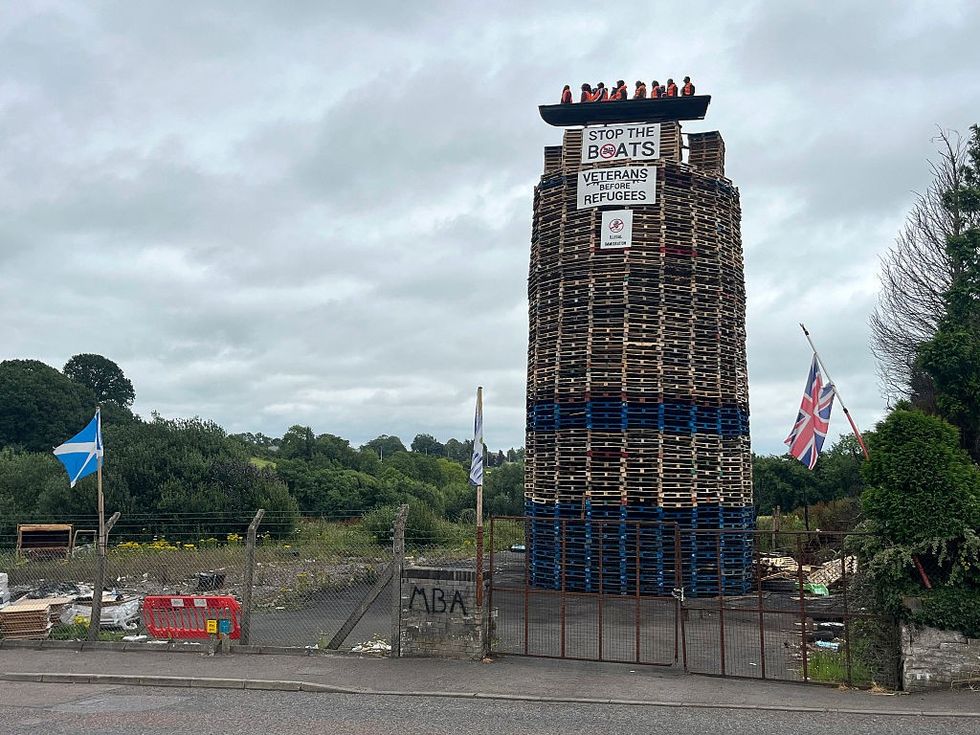A head-on collision between a truck and a bus claimed the lives of at least 12 people, leaving 38 others injured in Assam's Golaghat district on Wednesday (3). The collision occurred amidst dense fog that blanketed sections of eastern, northern, and central India, severely limiting visibility.
Delhi experienced a bone-chilling cold on Wednesday (3) with the city's maximum temperature dropping to 15.7 degrees Celsius, four notches below the normal.
Safdarjung, Delhi's main weather station, recorded visibility of 200 metres at 8.30 am, while the minimum temperature was recorded at 7.3 degrees Celsius, below the normal for the season's average.
The Indian Railways said 26 Delhi-bound trains were delayed by one to six hours due to fog.
According to the India Meteorological Department (IMD), "very dense" fog is when visibility is between 0 and 50 metres, 51 and 200 metres is "dense", 201 and 500 "moderate", and 501 and 1,000 "shallow".
Golaghat District Commissioner P Uday Praveen said the collision between the coal-laden truck and the bus with 49 people on board took place at Balijan near Dergaon on National Highway-715.
Assam Transport Minister Parimal Suklabaidya ordered an inquiry into the accident, and asked top officials of his department to reach the accident spot in Golaghat district to extend all possible assistance.
"A probe will reveal whether there was proper signage on the road… We will take necessary steps and if needed, file an FIR against the responsible persons," he said.
According to an official from the Dergaon Police Station, the bus, which was on its way to Tilinga Mandir in Tinsukia district for a picnic, collided with the truck around 4.30 am.
"The truck was coming from the direction of Jorhat and on the wrong side, as a portion of the four-lane highway was damaged. The bus was on the right track. There was fog and both the vehicles were speeding," he said.
According to the IMD, a very dense fog occurred in isolated pockets of east Uttar Pradesh, east Rajasthan, west Madhya Pradesh and Bihar in the morning hours.
A dense fog covered parts of west Rajasthan, west Uttar Pradesh, Gangetic West Bengal, Uttarakhand and Assam in the morning hours, it said.
The visibility recorded at 5.30 am was 25 metres in Bahraich and Gorakhpur, 200 m in Lucknow, 25 m in Bhopal and 50 m in Guna. It was 25 m in Purnea, while Patna recorded a visibility of 200m. Bareilly (50 m), Jhansi (200 m), Bikaner, Jaipur, and Ajmer (50 m each) were among places that experienced dense to very dense fog.
The IMD said the minimum temperatures are in the range of 6-9 degrees Celsius over most parts of Punjab, Haryana-Chandigarh-Delhi, west Uttar Pradesh, and Rajasthan and in the range of 10-12 degrees Celsius over east Uttar Pradesh, north Madhya Pradesh, Bihar, Jharkhand, West Bengal, and Sikkim.
These are above normal by 2-4 degrees over many parts of Punjab, Madhya Pradesh, Maharashtra, Chhattisgarh, and Gujarat.
No significant change in minimum temperatures is likely over rest parts of north India during the next five days, it forecast.
There was no relief from the intense dry and cold wave conditions in Kashmir as the minimum temperatures stayed several degrees below the freezing point.
Anantnag town was the coldest place in Jammu and Kashmir on Tuesday night as the mercury plunged more than seven degrees below the freezing point.
The chances of snowfall are the highest during this period and most areas, especially the higher reaches, receive heavy snowfall.
There was let-up in severe cold conditions in many areas of Rajasthan, including Bikaner, Ganganagar, Hanumangarh, Sikar and Phalodi.
Jaipur recorded a minimum temperature of 5.7 degrees Celsius. The maximum temperature in Ganganagar and Hanumangarh districts also fell to about 11 degrees.
Dense to very dense fog was seen in many parts while eastern Rajasthan is in the grip of a cold wave, according to a Met bulletin.
Several parts of Punjab and Haryana continued to experience cold weather conditions, with places like Narnaul and Gurdaspur reeling under severe chill.
Narnaul in Haryana recorded a minimum temperature of 4.5 degrees Celsius, according to the Meteorological Department's weather report.
Hisar, Karnal and Rohtak also experienced a cold night recording minimum temperatures of 7.4 degrees Celsius, 7.7 degrees Celsius and 7.2 degrees Celsius.
Ambala recorded a low of 8.8 degrees Celsius. Chandigarh, the common capital of the two states, recorded a low of 8.7 degrees Celsius.
In Punjab, piercing cold swept Gurdaspur, which recorded a low of 5 degrees Celsius.
Bathinda and Faridkot also reeled under a biting chill recording respective minimum temperatures of 6 degrees Celsius and 6.8 degrees Celsius.
Amritsar recorded a low of 8.2 degrees Celsius while Ludhiana and Patiala recorded respective minimum temperatures of 7.6 degrees Celsius and 8 degrees Celsius.
(PTI)

















 Kap’s Cafe in Surrey was struck by gunfire late at night with staff still insideInstagram/
Kap’s Cafe in Surrey was struck by gunfire late at night with staff still insideInstagram/ Kaps Cafe Instagram Story Instagram Screengrab/
Kaps Cafe Instagram Story Instagram Screengrab/ Kaps Cafe Instagram Story Instagram Screengrab/
Kaps Cafe Instagram Story Instagram Screengrab/

